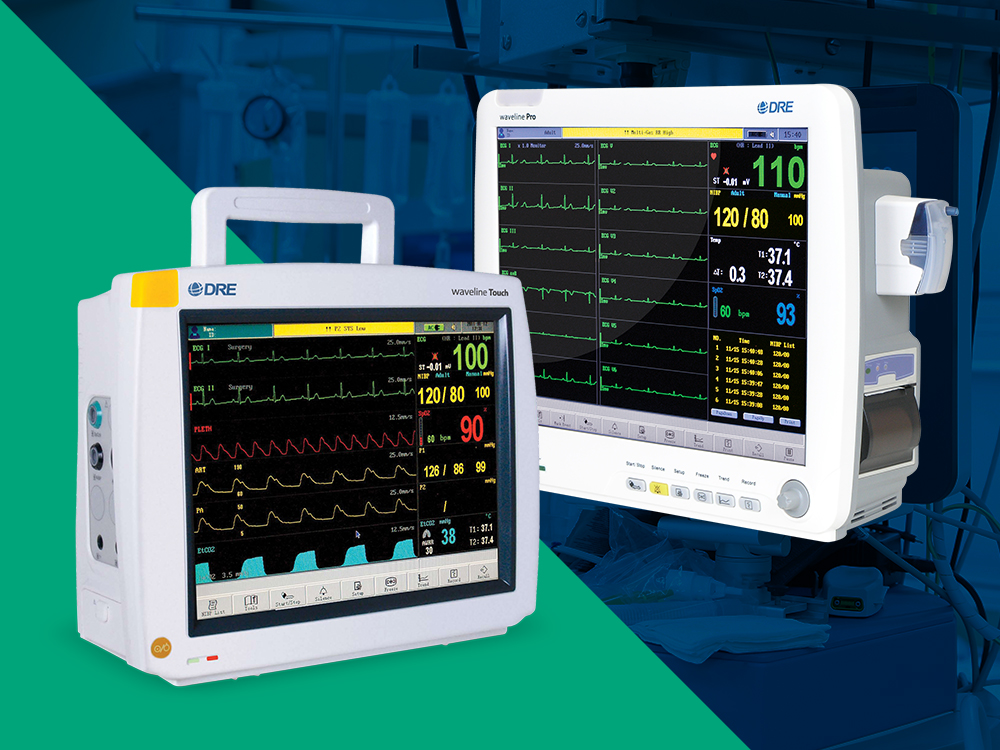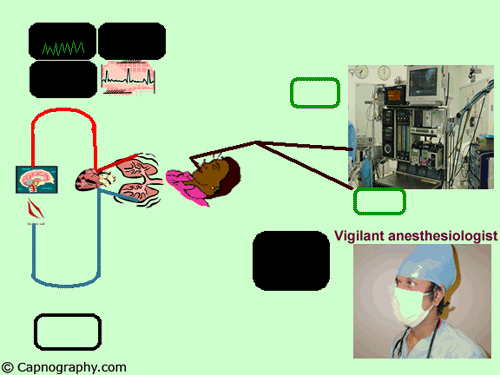end-tidal co2 monitoring standard of care
Monitoring of end-tidal carbon dioxide ETCO2 as noninvasive measurement of arterial carbon dioxide PaCO2 is a good tool for assessment and management of mechanically ventilated patients. Continuous assessment of correct endotra-.
In fact its commonly called the ventilation vital sign.

. Non-invasive assessment of ventilation can be performed by end-tidal EtCO 2 or transcutaneous TCOM monitoring of carbon dioxide CO 2. Nurses completed 2 assessments of confidence in readiness for discharge before and after etCO 2. Properly placed endotracheal tubes may become displaced due to movement of patients andor equipment.
The aim of this work is to correlate expiratory end-tidal carbon dioxide tension with arterial carbon dioxide tension in patients with. Prospective cross-sectional comparative one-group pre-post design. To determine if end-tidal carbon dioxide etCO 2 value increased nurses perceptions of confidence in patients readiness for postanesthesia care unit PACU discharge.
End-tidal CO2 may be useful here as an easily and immediately measurable index of changes in cardiac output. Capnometry provides a numerical value for ETCO2. Ventilation effective movement of gas in and out of the lungs.
After profound circulatory collapse the end tidal CO2. In contrast capnography delivers a more comprehensive measurement that is displayed in both graphical waveform and numerical form. End-tidal carbon dioxide detection is the most accurate technology to evaluate endotracheal tube posi-tion in patients who have adequate tissue perfusion.
Pulmonary blood flow CO2 from lungs to heart. A typical device has 3 color ranges. In the current New Jersey Standards for Hospital Facilities with which hospitals must comply on pain of losing their licenses one finds the following in the section on anesthesia supplies and equipment.
The 2010 House of Delegates of the American Society of Anesthesiologists ASA amended its Standards for Basic Anesthetic Monitoring to include mandatory exhaled end-tidal carbon dioxide E t CO 2 monitoring during both moderate and deep sedation to its existing requirement for endotracheal and laryngeal mask airway general anesthesia. 2 - a clinical estimate of the PaCO. In this study the aim was to review the applications of end-tidal carbon dioxide ETCO2 monitoring in emergency department multiple databases were comprehensively searched with combination of following keywords.
Venous return CO2 from tissue to heart. End-tidal carbon dioxide monitoring shall be performed continuously on all patients receiving general anesthesia. Despite the majority of literature being case series expert opinion would suggest.
2 when ventilation and perfusion are appropriately matched Wide gradient is diagnostic of a ventilation -perfusion mismatch Use etCO. This set of standards addresses only the issue of basic anesthetic monitoring which is one component of anesthesia care. CO2 monitors measure gas concentration or partial pressure using one of two configurations either.
At the end of expiration etCO. Aim of the work. 11 End Tidal CO2 monitoring ETCO2 via waveform capnography should be used to confirming correct placement of the endotracheal tube andor measure the adequacy of ventilation 12 For patients in cardiac arrest end tidal CO2 is a useful adjunct to treatment 121 Note.
End-tidal carbon dioxide ETco 2 monitoring provides valuable information about CO 2 production and clearance ventilation. Defined as the monitoring of exhaled carbon dioxide through the respiratory cycle Measuring of End tidal CO2 is considered a standard of care for confirming endotracheal tube placement An important adjunct for assessing a critical patient The Journey of A Molecule Through the Respiratory Cycle. Allows trending of PaCO.
Changes in the shape of the capnogram are diagnostic of disease conditions while changes in end-tidal CO 2 EtCO 2 the maximum CO 2 concentration at the end of each tidal breath can be used to assess disease severity and response to treatment. Hence the device should turn yellow when the endotracheal tube is inserted in patients with intact circulation. 2 noninvasive measurement of CO.
It is the standard of care during certain procedures such as intubations and sedations and can be used in variety of clinical situations. For this reason capnography is currently the most widely recommended method for monitoring ETCO258. In certain rare or unusual circumstances 1 some of these methods of monitoring may be clinically impractical and 2 appropriate use of the described monitoring methods may fail to detect untoward clinical developments.
End-tidal carbon dioxide ETCO2 is the level of carbon dioxide that is released at. Capnography is also the most reliable indicator that an endotracheal tube is placed in the trachea after intubation. Fluctuations in CO 2 lead to changes in cerebral and pulmonary blood flow and are associated with brain injury 3 4 and severe intraventricular hemorrhage IVH in preterm infants 5 highlighting the importance of.
Measurement of end-tidal CO2 therefore requires. An increase in etCO2 by 5 appears to have reasonable sensitivity 71-91 and specificity 94-100 for fluid responsiveness in two studies of patients breathing passively on the ventilator. However ETCO2 may be underused in the PED setting.
End-tidal CO2 ETCO2 monitoring is not a new modality in the pediatric emergency department PED and emergency department. As a non-invasive trend even when there is a wide. ETCO2 emergency department monitoring and critical monitoring in PubMed Google Scholar Scopus Index Copernicus EBSCO and.
This practice however is not supported by well-controlled clinical trials. It became effective as of July. A purple color corresponds to an ETCO 2 level 05 a tan color indicates ETCO 2 of 05-2 and a yellow color indicates ETCO 2 2.
Normal end-tidal CO 2 is 4. The end-tidal CO2 monitoring standard of care varies based on your environment and the situationparamedics in the field for example may use slightly different methods than anesthesiologists in an OR. Use of heart rate electrocardiography noninvasive and arterial blood pressure atrial pressure pulse oximetry and end-tidal carbon dioxide monitoring in the pediatric critical care unit is commonplace.
Also called capnometry or capnography this noninvasive technique provides a breath-by-breath analysis and a continuous recording of ventilatory status.

A Systematic Approach To Capnography Waveforms Jems Ems Emergency Medical Services Training Paramedic Emt News

Standard Six Paremater Icu Monitor Ibp And Etco2 Optional Medical Medical Equipment Icu

Handheld Vital Signs Monitor Vital Signs Monitor Vital Signs Pulse Oximeter

Jual 7 Parameters Patient Monitor Co2 Capnography Bracket Stand Heart Monit Kota Yogyakarta Atha Store Tokopedia

Zoll R Series Defibrillator Available With Pacing End Tidal Co2 And More Interior Design Living Room Small Space Interior Design Interior Design Trends

Capnography Vs Spo2 The Difference Could Be Life Changing

Pin By Shanghai Jaqi Medical On Multi Parameter Patient Monitor Medical Hospital Furniture Medical Equipment

Mindray Accutorr 7 Vital Signs Monitor Vital Signs Monitor Vital Signs Monitor

Masimo Rad 97 Pulse Co Oximeter Health Device Medical Design Medical Device

Qube紧凑型床头监护仪 Spacelabs医疗保健 Health Care Assessment Tools Touch Screen Display

8inch Unique Design Patient Monitor Model Md908 Thermal Printer Unique Designs Design

Data Acquisition End Tidal Co2 Signal Etco2 And Resp Impedance From Download Scientific Diagram







